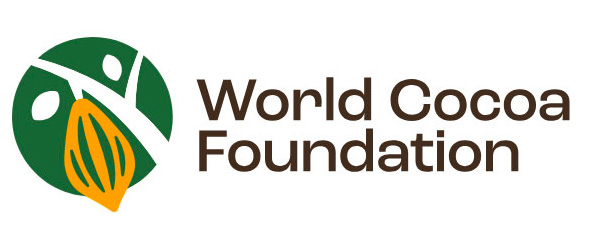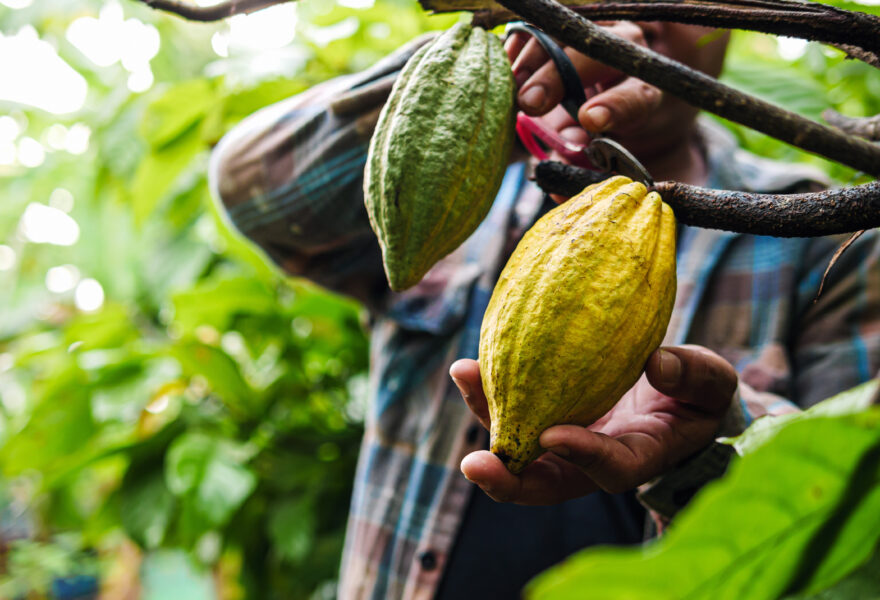Inconsistencies in emissions reporting have made it difficult to ensure comparability, transparency and alignment on climate strategies across the cocoa sector. These challenges stem from differences in geography, production systems and interpretation of reporting guidelines. To address this, the World Cocoa Foundation (WCF) — an organization representing the global cocoa and chocolate sector — mobilized its members to develop harmonized greenhouse gas (GHG) accounting methods. In partnership with Quantis, WCF created the first sector-wide GHG accounting methodology published in February 2025, enabling accurate, standardized and actionable emissions reporting across the cocoa value chain.

Challenge
GHG accounting in the cocoa sector has historically been fragmented due to a lack of consistent and detailed guidance, leading to companies using multiple methodologies that deliver varying results. Recent updates to the GHG Protocol (GHGP) – which introduces stricter requirements for land-related emissions and removals – along with emerging regulatory requirements, have made the need for alignment across the sector even more urgent to ensure high-quality and consistent results.
Key challenges included:
- Land use complexity: Cocoa production, particularly in smallholder-dominated landscapes, is closely linked to deforestation and land use change, requiring robust methods for accurate emissions tracking.
- Indirect supply chain uncertainty: Many cocoa companies are still working towards full visibility of their entire supply chains, making it difficult to attribute emissions in the indirect supply chain.
- Inconsistent reporting approaches: While many companies follow GHGP and SBTi, varying interpretations, methodological and data gaps hinder comparability and industry-wide progress.
Solutions
Quantis worked closely with WCF, its member companies and key industry stakeholders to develop a practical, step-by-step methodology that balances scientific rigor with usability. The GHG Accounting Manual provides:
- A minimum methodological standard for GHG accounting that supports reporting with the GHGP, ensuring a uniform and comprehensive approach.
- Clear guidelines on measuring and reporting emissions from land use change, land management and removals.
- Flexibility for companies to apply more advanced methods where feasible, encouraging continuous improvement.
The cocoa sector has long needed a common language on greenhouse gas emissions. Partnering with Quantis helped us cut through the complexity and deliver a practical, science-aligned standard that the entire industry can stand behind. This manual is more than a methodology – it’s a foundation for consistent emissions reporting and collective climate action.
Michael Matarasso, Impact Director and Head of North America, WCF
Results
The GHG Accounting Manual for Cocoa provides:
- A sector-wide standard for Scope 3 emissions accounting, enabling consistent, comparable and credible reporting across companies and geographies.
- Alignment with emerging standards, including supporting reporting with the GHG Protocol Land Sector and Removals Guidance, helping companies prepare for regulatory shifts and voluntary commitments.
- Practical tools such as checklists and sampling guidance to support accurate, on-the-ground implementation.
- Clarity on key methodological questions, including how to handle tree cover loss, calculate removals and manage farmer turnover without frequent rebaselining.
By creating a sector-wide framework, WCF and Quantis have provided cocoa companies with the tools needed to drive meaningful climate action, improve supply chain transparency, and future-proof their business in the face of evolving regulations.
We’re your full-service partner for the transformational journey. Our strategic advisors are equipped to guide you at every point along the way.



